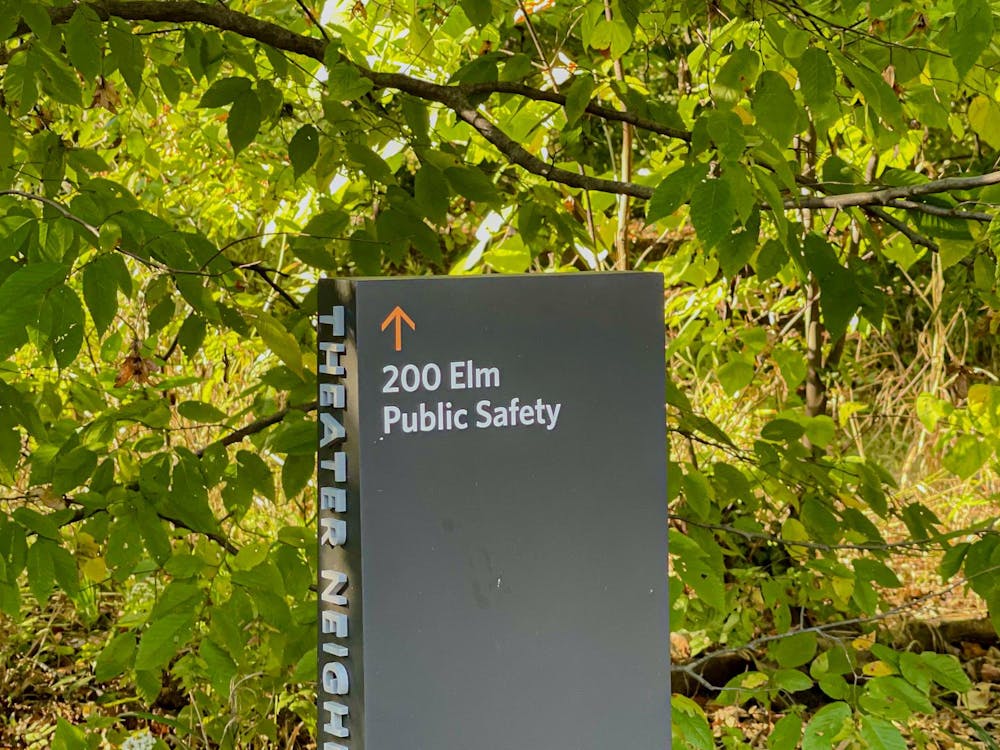Soothing music played from a portable MP3 player as lights were dimmed and shades drawn in the religion department lounge. Seven students sat on couches and on the floor as Ryan Bongseok Joo GS explained the group's exercise for that night — a tantric Buddhist chant.
Concentration and awareness, Joo said, are the two pillars of meditation.
"Try not to be aware of things purposefully," he said, "[but] allow certain things to focus."
Every Thursday night, the group gathers for a relaxing, wholesome hour of meditation.
The weekly session gives students the opportunity to appreciate a new experience, or in the case of group organizer Bernardette Arellano '02, to explore a long-held interest in Zen Buddhism.
Joo, who is an ordained monk, led Arellano's precept for REL 225: The Buddhist World of Thought and Practice last semester.
After being introduced by Joo's roommate, the two formed the meditation group to address an interest expressed by some students.
"A few people asked if there was a meditation group on campus," she said.

The group has ranged from five to nearly 20 participants in the five meetings held so far.
Joo and the group have been using several meditation methods, including breath meditation in the lotus position, in which participants sit crossed-legged with their feet on top of their thighs. Thinking the position would be too difficult to start with, however, the group has lately tried chanting and chakra meditation, which are less physically demanding.
"There are a lot of different methods," Joo said. "But principle is the same."
Joo came to the United States from South Korea about 10 years ago. He received his BA from the University of California at Berkeley and his MA from Harvard University and is in his third year studying East Asian Buddhism at the University. He plans to teach Buddhism at the college level in the United States after finishing his dissertation.

Ordained three years ago into a Korean Buddhist order, Joo, whose monk name is the Venerable Haemin, ministers at the Bulkwangsa temple, or the Temple of Buddha's Radiance, in New York City every weekend.
Last week, Joo translated for the Venerable Ji-Kwan, who gave a lecture titled "The Self as a Storehouse of Images: The Principle of Buddhist Visualization Meditation" in McCosh 64 last Wednesday.
Ji-Kwan is a Buddhist master and runs a popular temple in Seoul. He has been a close friend of Joo's abbot since the two trained together as novices.
Originally a journalist, Ji-Kwan fled after writing pro-democracy articles and met and trained with Buddhists in the mountains where he hid.
In his lecture, he explored the idea of life being composed of mental imagery and urged listeners to choose positive mental paths as the way to a more fulfilling life.
Joo picked up this theme while explaining a few concepts Thursday.
"Whatever you focus on," he told the group, "your mind will begin to approximate that object."
After about 15 minutes of chanting, Joo marked the end of the chant by slapping a split bamboo stick called a "juk-bi" with his palm, leading into the silent Zen-influenced segment of the night's meditation.
As the session drew to a close about 20 minutes later and the room's lights were flipped on, everyone looked around the room and smiled, seeming refreshed but a bit disoriented by the sudden brightness.
The beauty of meditation is that while all animals have senses, "we can look at our own mind," he said. "That's real magic."







